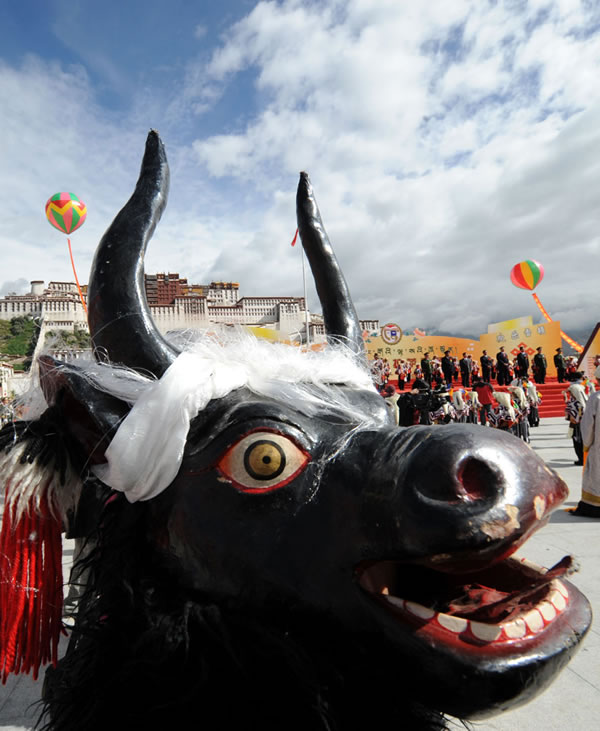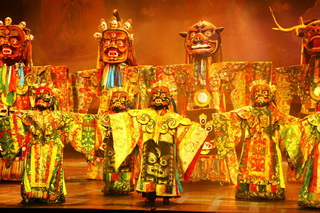Tibetan opera is an all-round performing art that tells the story by the form of fol dances and songs. Folk troupes of Tibetan opera are easily encountered any time and anywhere, with the audience from miles away to crowd the performer. This art style is influenced by Tibetan Buddhism from the view of skills and contents. Since the 17th century, Tibetan Opera has had a rapid development and reached its peak with a long list of excellent players and traditional repertoires. Different genres evolved, each with a certain style. Performances were held during various festive occasions. The Shoton Festival which was once a religious festival became a special festive occasion of Tibetan Opera joint performance, during which many professional and amateur troupes were summoned to Lhasa to entertain the Dalai Lama and his followers. It's widely believed that Tibetan opera comes from the following three aspects: folk songs and dance, folk rap, religious rituals and religious arts.
Besides, there is a legend that the origin of Tibetan opera began from a dance to worship deity and the dance was created by Tibetan Buddhist, LianHuaShen, in 8th century. Later, LianHuaShen set up a theatrical troupe .It was composed of seven beautiful sisters who were good at dancing. They wrote and composed dramas of Buddhism stories and were on tour shows in Tibet. The shows not only cultivated ordinary people, but also collected some money.That is the beginning of Tibetan opera. Tibetan opera has many schools. It's full of Tibetan chracteristics. Prince Nor-bzang, Princess WenChen, Prince Dri-med-kun-iden, Maiden Vgro-ba-bzang-mo, Brothers Don-yod and Don-grub, Gzugs-kyi-nyi-ma, Pad-ma-vod-vba, Maiden Shang-ma are eight classical operas, which have wonderful music, beautiful and colorful masks and finery.


 China Tours
China Tours Tibet Tours
Tibet Tours China Theme Tours
China Theme Tours Off The Beaten Track
Off The Beaten Track Yangtze Cruises
Yangtze Cruises China Trip Planner
China Trip Planner Travel Agents
Travel Agents China Tours
China Tours Tibet Tours
Tibet Tours China Theme Tours
China Theme Tours Off The Beaten Track
Off The Beaten Track Yangtze Cruises
Yangtze Cruises China Trip Planner
China Trip Planner Travel Agents
Travel Agents


 0086-28-85711328
0086-28-85711328 0086-28-85546015
0086-28-85546015







